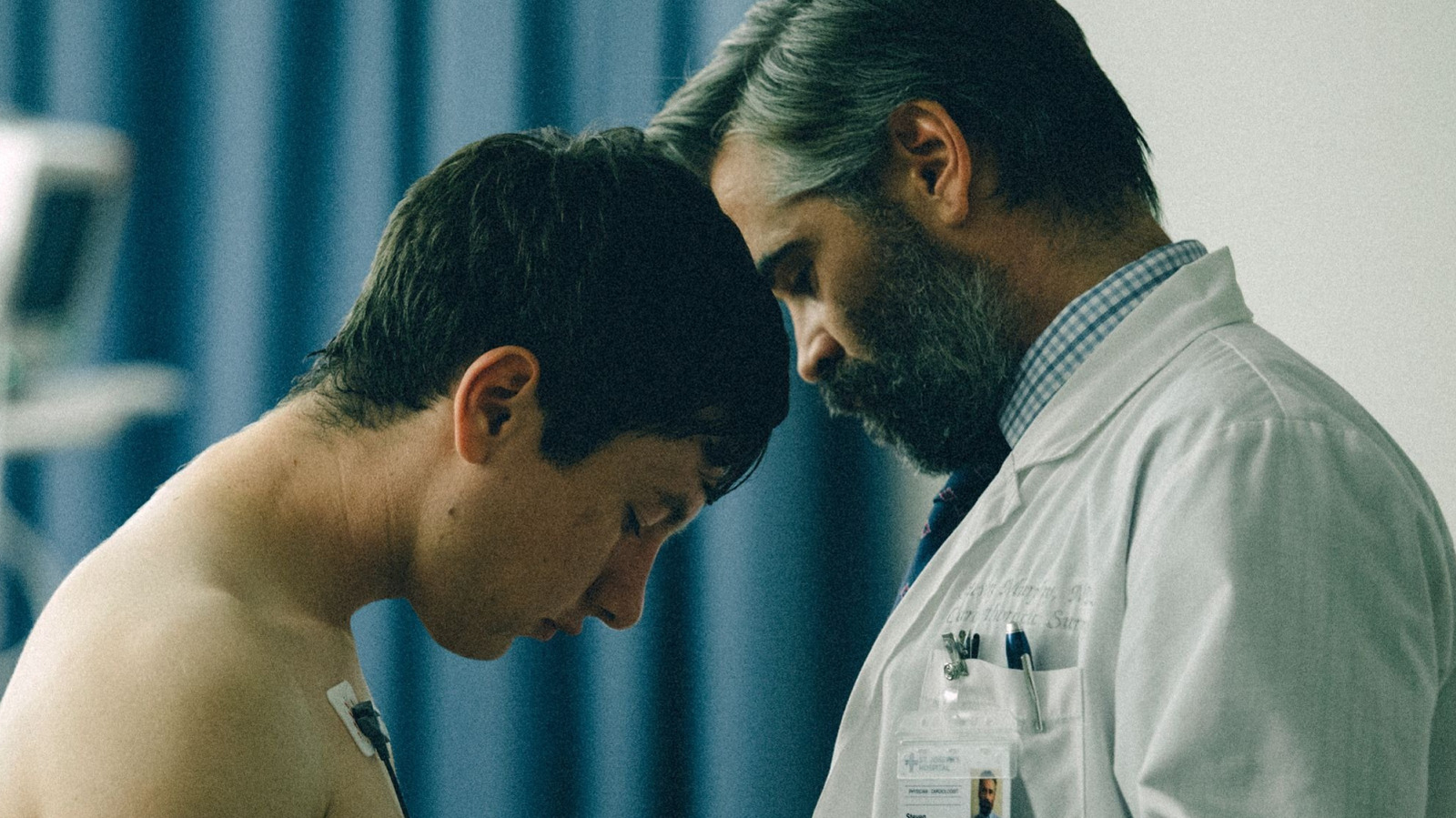
The Ending of The Killing Of A Sacred Deer Analyzed: A Relentless Dilemma
The films crafted by Greek director Yorgos Lanthimos are not universally appealing. They are starkly unsettling, thrusting viewers into discomfort with their startling themes and equally striking presentation. However, there’s an undeniable allure in his disturbingly rich filmography. Whether adapting a script he penned with longtime partner Efthimis Filippou or working from material generated by Tony McNamara, Lanthimos infuses his works with a distinctive worldview, using characters that often feel entirely alien, prompting audiences to reflect on their own humanity. This can render his movies somewhat perplexing, notably seen in his 2017 psychological thriller “The Killing of a Sacred Deer.”
In this film, Colin Farrell takes on the role of heart surgeon Steven Murphy, who forms a peculiar connection with 16-year-old Martin Lang, portrayed by Barry Keoghan. Martin’s father suffered an untimely demise during one of Steven’s surgeries. As the story unfolds, Martin ingratiates himself with the Murphy family, growing perilously close to Steven’s young daughter Kim and son Bob. The plot escalates when Martin reveals a chilling ultimatum: Steven must sacrifice a family member, or risk losing his wife and children to a slow, horrific illness. While our review deemed the film rather grim, it undeniably showcases Lanthimos and Filippou’s dark humor, solidifying “The Killing of a Sacred Deer” as one of the director’s standout projects. Let’s delve deeper into this twisted narrative and address some significant questions it raises, starting with the peculiar way its characters communicate.
The Unusual Dialogue of The Killing of a Sacred Deer
The stilted dialogue seen in Lanthimos’s films, including his collaborations with McNamara, can often be attributed to their historical settings. However, “The Killing of a Sacred Deer” seems to unfold in contemporary times, yet its characters engage in odd, detached conversations. For instance, Steven casually informs a colleague about his daughter’s menstruation, all while maintaining an unnervingly relaxed tone, as if discussing a mere recipe or a sports game, leaving his co-worker unfazed. This peculiar emotional distance is a signature of Lanthimos’s work, alongside his memorable dance sequences, which this particular film lacks. Such unnatural interactions serve to heighten the emotional impact when characters finally exhibit vulnerability, intensifying the horror or dark humor that unfolds. In “The Killing of a Sacred Deer,” the odd acting choices and dialogue lend a theatrical quality, enriching the overall narrative.
The Ancient Greek Influence on The Killing of a Sacred Deer
While Lanthimos and Filippou’s screenplay is original, its roots trace back to the ancient Greek tragedy of Iphigenia, daughter of Agamemnon, the Mycenaean king. In Euripides’s “Iphigenia in Aulis,” Agamemnon angers Artemis, the goddess of the hunt, by killing a sacred deer, which halts the winds necessary for his army to sail to Troy. To appease her, Artemis demands the sacrifice of Agamemnon’s daughter. As Iphigenia meets her fate, she transforms into a doe, suggesting Artemis took her to live among the gods. Within “The Killing of a Sacred Deer,” Martin mirrors Artemis’s role, while Steven embodies Agamemnon. Instead of demanding a straightforward sacrifice, Martin complicates matters, forcing Steven into a nightmarish version of a “Sophie’s Choice,” compelling him to select which family member he must kill to save the others.
As the tension mounts, a ticking clock looms over Steven. Martin has seemingly cursed or poisoned Steven’s children, who gradually lose their ability to walk and their desire to eat. The horrifying moment when they start bleeding from their eyes signals the urgency of Steven’s decision. The question arises: Does Martin possess supernatural powers?
An Unclear Power Dynamic Between Martin and the Murphy Family
In the film, Keoghan’s Martin embodies a mischievous yet sinister teenager, seemingly reveling in the discomfort he instigates in Steven, potentially extending beyond mere vengeance. Does he possess otherworldly abilities? He replaces Artemis in the myth, appearing capable of inflicting this dread illness upon the Murphy children without a clear methodology. At one point, he demonstrates his control by instructing Kim to walk again during a phone call. However, like many elements of Lanthimos’s storytelling, the specifics of these occurrences remain ambiguous. Perhaps Martin poisoned the children during their interactions, or he maintains his grip over them through unseen means—perhaps through the cigarettes he gets Kim hooked on. There’s even the possibility that he embodies an otherworldly entity wielding genuine curses.
Ultimately, much like the earlier Lanthimos film “The Lobster,” the focus of “The Killing of a Sacred Deer” lies in its thematic layers rather than the mechanics of its horror. The central narrative revolves around Steven’s unwillingness to accept responsibility.
Steven’s Tragic Flaw: An Inability to Take Responsibility
As the climax unfolds, Steven’s indecision culminates in horror. He grapples with the unbearable choice of sacrificing one of his children or his wife, who chillingly suggests that one of the children should be chosen, as she can bear another. As he navigates the moral quagmire, Steven even consults the school principal about which of his children is the “better” one. The film hints at Steven’s questionable ethics as a surgeon, leaving audiences to wonder about the true catalyst behind Martin’s father’s death.
In the ultimate act of avoidance, Steven puts his family in a spin-the-bottle-style game with a loaded gun, leaving the fate of his son Bob to random chance. This desperate act of shooting Bob tragically fulfills Martin’s requirements for the sacrifice, saving Kim and Anna in the process. Steven’s inability to own his decision underscores his moral downfall.
The Final Scene: A Cold Conclusion
After Bob’s tragic death, viewers witness the Murphy family in a diner—seated in the very spot where Steven and Martin once spiraled into their unsettling connection. An eerie chill pervades the atmosphere as the family’s emotional distance deepens in light of the tragedy. The absence of retaliation against Martin seems to symbolize their shared trauma and perhaps reflect the mythological roots of Martin’s character as a representation of a goddess.
As the credits roll, the film concludes without absolute resolution, leaving audiences with lingering questions—a hallmark of Lanthimos’s work. For those drawn to his unique portrayal of tragic narratives and dark humor, his latest film “Kinds of Kindness” offers more thought-provoking reflections.





